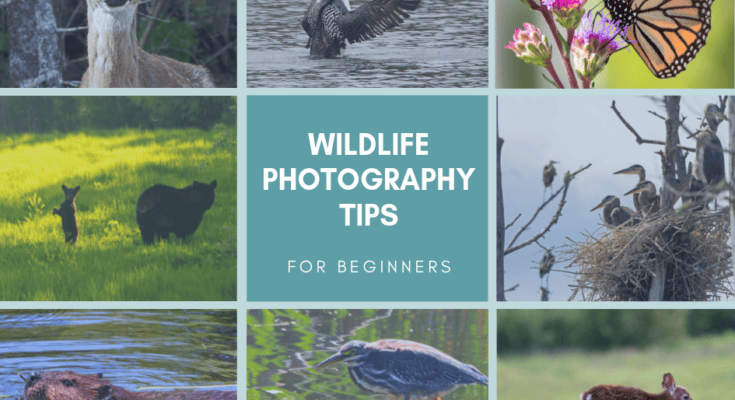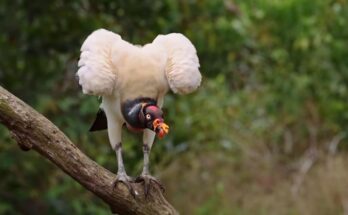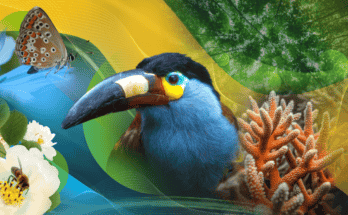Wildlife photography requires patience and keen observation. Capturing stunning images of animals in their natural habitat can be challenging.
Are you fascinated by wildlife and eager to capture their beauty through your lens? Wildlife photography can be rewarding, offering a unique opportunity to connect with nature. Whether you’re a beginner or experienced photographer, knowing some essential tips can make a big difference.
From understanding animal behavior to mastering your camera settings, these tips will help you improve your wildlife photography skills. Get ready to enhance your experience and capture the wild in breathtaking images. Let’s dive in and explore some effective wildlife photography tips!
Choosing The Right Equipment
Choosing the right equipment is crucial for wildlife photography. Your gear can make or break your shots. With the right tools, you can capture stunning images of animals in their natural habitats. Let’s dive into the key components you need.
Camera Selection
First, choose a camera with fast autofocus. Wildlife moves quickly, so you need a camera that can keep up. A DSLR or mirrorless camera works best. Look for one with a high frame rate. This helps you snap multiple shots in quick succession. High resolution is also important. It allows you to crop images without losing detail.
Lens Options
The lens is just as important as the camera. A telephoto lens is ideal. It lets you capture distant subjects without getting too close. A 300mm lens is a good starting point. For more flexibility, consider a zoom lens. It offers a range of focal lengths. This helps you adapt to different shooting situations.
Essential Accessories
Don’t forget the essential accessories. A sturdy tripod keeps your camera steady. This is vital for sharp images. A monopod is a good alternative for more mobility. Extra batteries and memory cards are also a must. Wildlife photography can be unpredictable. You don’t want to miss a shot because of a dead battery or full memory card. A camera bag with good padding protects your gear. It also makes it easier to carry your equipment into the wild.

Mastering Camera Settings
Wildlife photography requires a good understanding of your camera settings. Knowing how to control your shutter speed, aperture, and ISO can make a huge difference. These settings help you capture sharp, well-exposed images of animals in their natural habitats.
Shutter Speed
Shutter speed controls how long your camera’s sensor is exposed to light. For wildlife photography, use a fast shutter speed to freeze motion. A fast shutter speed, like 1/1000th of a second, is ideal for capturing birds in flight or animals running. A slower shutter speed can create blur, which is useful for showing motion but should be used carefully.
Aperture Control
The aperture setting affects the depth of field in your photos. A wide aperture (small f-number like f/2.8) creates a shallow depth of field. This makes the subject stand out against a blurred background. A narrow aperture (large f-number like f/16) keeps more of the scene in focus, which is good for landscapes.
Iso Adjustments
ISO controls the camera’s sensitivity to light. In wildlife photography, you often shoot in low light conditions. Increasing the ISO can help you achieve a good exposure. But be careful: a high ISO can introduce noise or grain into your photos. Try to keep ISO as low as possible while still getting a well-exposed shot.
| Setting | Recommended Values |
|---|---|
| Shutter Speed | 1/1000s or faster for moving subjects |
| Aperture | f/2.8 for shallow depth of field, f/16 for more focus |
| ISO | As low as possible; adjust as needed for light |
Understanding these settings will help you capture stunning wildlife images. Practice adjusting them to suit different situations and lighting conditions.
Understanding Animal Behavior
Understanding animal behavior is crucial for successful wildlife photography. Recognizing how animals act will help you capture stunning images. It increases your chances of getting the perfect shot. This section will explore the importance of researching species, predicting movements, and safety considerations.
Researching Species
Before heading into the wild, research the species you plan to photograph. Knowing their habits, diet, and activity patterns can make a big difference. For instance, some animals are more active at dawn or dusk. Others might be more visible in specific seasons.
- Habitat: Understand where the species lives.
- Diet: Know what they eat.
- Breeding Seasons: Learn when they are more active.
Use books, documentaries, and online resources to gather information. The more you know, the better your chances of capturing unique moments.
Predicting Movements
Predicting movements is essential for capturing dynamic wildlife shots. Animals often follow patterns. For example, birds might fly to a water source at specific times. Predators might hunt at dusk or dawn.
- Observe their paths.
- Note their feeding times.
- Watch for signs of mating behavior.
Patience is key. Spend time watching and learning from their movements. It will help you anticipate where to be and when.
Safety Considerations
Safety is paramount in wildlife photography. Both your safety and the animals’ well-being matter. Maintain a safe distance to avoid disturbing the animals. Use telephoto lenses to get close-up shots without encroaching on their space.
| Do’s | Don’ts |
|---|---|
| Keep quiet and move slowly. | Don’t feed the animals. |
| Wear neutral-colored clothing. | Don’t use flash. |
Respect their environment. Avoid making loud noises or sudden movements. Remember, your goal is to capture their natural behavior without interfering.
Optimal Lighting Techniques
Optimal lighting enhances wildlife photography. Early morning or late afternoon light provides the best results. Soft, natural light highlights the animal’s features.
Lighting can make or break your wildlife photos. It is crucial for capturing stunning images. Good lighting highlights textures, colors, and details. It also adds depth and emotion to your photos.Golden Hour
The golden hour is the first hour after sunrise and the last hour before sunset. During this time, the sun is low in the sky. The light is soft, warm, and diffused. This makes it perfect for wildlife photography. Animals look more vibrant and natural. Shadows are longer and softer. Colors are more saturated. Aim to shoot during these times for the best results.Backlighting
Backlighting is when the light source is behind your subject. This technique creates a beautiful halo effect. It can add drama and mood to your photos. Backlighting works well with fur or feathers. It highlights their texture. To achieve this, position yourself so the sun is behind the animal. Use spot metering to expose the animal correctly.Using Natural Light
Natural light is your best friend in wildlife photography. It is free and always available. Midday sun can be harsh and create strong shadows. Cloudy days provide soft, even light. This is ideal for capturing details. Look for open shade if the light is too harsh. Avoid using flash as it can startle animals. Always make the most of natural light for the best wildlife photos. “`Composition Tips
Good composition can make or break a wildlife photograph. It draws the viewer’s eye and tells a story. Here are some key composition tips to improve your wildlife photography.
Rule Of Thirds
The Rule of Thirds divides the frame into nine equal parts using two horizontal and two vertical lines. Place the subject along these lines or at their intersections. This creates balance and interest.
For instance, if you’re photographing a bird, position it on one of the vertical lines. This technique enhances visual appeal and draws the viewer’s eye to the subject naturally.
Leading Lines
Leading lines guide the viewer’s eye through the photograph. These lines can be natural elements like rivers, tree branches, or even animal tracks. They create a path for the viewer to follow.
Use leading lines to direct attention to the main subject. For example, a path leading to a deer in the forest can make the image more engaging. It adds depth and context to your photo.
Framing Subjects
Framing involves using natural elements to create a frame around your subject. This technique adds depth and context. It can also make the subject stand out more.
Look for elements like tree branches, foliage, or even rocks. Position them around the edges of your frame. This draws attention to the subject and adds a sense of place.
For example, photographing an animal through the branches of a tree can create a more intimate and focused image.
Remember, composition is key in wildlife photography. Use these tips to create compelling and visually appealing images.

Patience And Persistence
Wildlife photography is a test of patience and persistence. Capturing that perfect shot can take hours, days, or even longer. The key to success is not giving up and being ready when the moment arrives. In this section, we’ll discuss three crucial aspects of patience and persistence: Waiting for the Perfect Shot, Dealing with Frustration, and Staying Motivated.
Waiting For The Perfect Shot
Waiting for the perfect shot requires stillness. Animals sense movement and get scared. Find a good spot and stay there. Watch and listen. Observe the animal’s behavior and habits.
Sometimes, you wait for hours. Be ready at all times. The perfect shot might come when you least expect it. Use a tripod to keep your camera steady. This helps in capturing clear and sharp images.
Dealing With Frustration
Frustration is common in wildlife photography. You might miss shots. Animals may not show up. Stay calm and patient. Take deep breaths and enjoy the surroundings. Keep a positive mindset.
Remember, every missed shot is a learning experience. Review your photos and see what you can improve. Talk to other photographers. Share experiences and tips. This helps in staying motivated and reducing frustration.
Staying Motivated
Motivation can wane over time. Set small goals. Celebrate each achievement. Keep a journal of your progress. Write about your experiences and what you learned. This helps in tracking your growth.
Join photography groups or online forums. Participate in challenges and contests. This keeps you engaged and inspired. Surround yourself with like-minded people. Their passion can fuel your motivation.
Above all, remember why you started. The love for wildlife and photography. Let this passion drive you forward.
Post-processing Tips
Wildlife photography is an exciting and rewarding hobby. Capturing the perfect shot often requires patience and skill. But the work doesn’t end after pressing the shutter. Post-processing is a crucial step in creating breathtaking images. Here are some post-processing tips to enhance your wildlife photos.
Basic Editing
Start with basic edits to improve your image quality. Adjust exposure to brighten or darken the photo. Use the contrast slider to add depth. Increase the sharpness to highlight details. If needed, tweak the white balance for accurate colors.
These simple adjustments can make a significant difference. They lay the foundation for more advanced edits.
Enhancing Colors
Enhancing colors can make your wildlife photos pop. Use the saturation and vibrance sliders to boost colors. Be cautious not to overdo it. Over-saturation can make your photo look unnatural.
Consider adjusting individual colors. For example, increase the green tones for lush foliage. Enhance the blues for clear skies. This method allows more control over your image.
Cropping And Resizing
Cropping helps focus on the subject. Remove any distracting elements from the frame. Use the rule of thirds to place your subject in a strong composition. Ensure the resolution remains high after cropping.
Resizing is important for different platforms. Use a larger size for prints. Smaller sizes work better for online sharing. Always maintain the aspect ratio to avoid distortion.
Ethical Considerations
Wildlife photography is a rewarding yet challenging pursuit. It’s essential to follow ethical guidelines to protect the subjects you capture. Ethical considerations ensure that your presence doesn’t harm the environment or the animals. By being mindful of your actions, you contribute to the well-being of wildlife.
Respecting Wildlife
Always keep a safe distance from animals. Use a zoom lens to capture close-up shots. Avoid feeding wildlife, as it can disrupt their natural behavior. Respect their space and avoid making loud noises. Remember, you are a guest in their habitat.
Minimizing Disturbance
Move slowly and quietly to avoid startling animals. Stay on marked trails to protect fragile ecosystems. Avoid using flash photography, as it can scare or harm animals. Be patient and wait for natural moments. Your goal is to capture animals as they are.
Conservation Efforts
Support conservation organizations through donations or volunteering. Share your photos to raise awareness about wildlife conservation. Highlight the importance of preserving natural habitats. Educate others about the impact of human activities on wildlife. Your images can inspire action and change.

Frequently Asked Questions
What Is The Best Time For Wildlife Photography?
The best time for wildlife photography is early morning or late afternoon. During these times, the light is softer and animals are more active.
How Do I Approach Animals Safely?
Always keep a safe distance from animals to avoid startling them. Use a telephoto lens to capture close-up shots without disturbing wildlife.
What Gear Is Essential For Wildlife Photography?
A good camera with a fast shutter speed, a telephoto lens, and a tripod are essential. These help in capturing sharp and clear images.
How Can I Improve My Wildlife Photography Skills?
Practice regularly, study animal behavior, and learn from experienced wildlife photographers. Joining photography workshops can also be very beneficial.
Conclusion
Capturing stunning wildlife photos takes practice and patience. Use these tips to improve your skills. Focus on the animal’s eyes for a captivating shot. Always be respectful of wildlife and their habitat. Keep your camera ready to capture unexpected moments.
Experiment with different angles and settings. Practice makes perfect. Enjoy the process and cherish every moment in nature. Happy shooting!



